Perception Regarding Prevention and Control of Hepatitis Among the Garment Workers of Dhaka
Introduction
Viral hepatitis, caused by infection with one hepatitis viruses, is a major public health problem worldwide. Infection with hepatitis viruses causes a significant disease burden in the South- East Asia Region, in the form of both acute and chronic hepatitis, with approximately 500 000 deaths annually in the Region [1]. Hepatitis is inflammation of the liver in response to infection or toxin. The condition can be self-limiting or can progress to fibrosis (scarring), cirrhosis or liver cancer. Hepatitis viruses are the most common cause of hepatitis in the world but other infections, toxic substances (e.g., alcohol, certain drugs), and autoimmune diseases can also cause hepatitis [2]. Viral infections of the liver that are classified as viral hepatitis include hepatitis A, B, C, D, and E.A different virus is responsible for each type of virally transmitted hepatitis [3]. Excessive alcohol consumption is sometimes referred to as alcoholic hepatitis. The alcohol directly injures the cells of the liver. Other toxic causes of hepatitis include overuse or overdose of medications and exposure to poisons.
It’s three times more common in women than in men. When symptoms appear, they usually do so about 15 to 180 days after the person has become infected. Patient outcomes after the acute phase depend on various factors, especially the type of hepatitis [4,5]. Hepatitis A virus (HAV) is most often transmitted through consumption of contaminated water or food. HAV infections can also be severe and life threatening. Most people in areas of the world with poor sanitation have been infected with this virus. Safe and effective vaccines are available to prevent HAV [6]. Hepatitis B virus (HBV) and Hepatitis C virus (HCV) are transmitted through exposure to infective blood, semen, and other body fluids, can be transmitted from infected mothers to infants at the time [6]. Hepatitis D virus (HDV) infections occur only in those who are infected with HBV. The dual infection of HDV and HBV can result in a more serious disease and worse outcome. Hepatitis B vaccines provide protection from HDV infection. Hepatitis E virus (HEV is mostly transmitted through consumption of contaminated water or food [7].
Safe and effective vaccines to prevent HEV infection have been developed but are not widely available [6,8]. In the World Health Organization (WHO) South-East Asia Region, the annual number of acute cases of hepatitis A is estimated to be 400 000, with 800 deaths. In the 1980s, the presence of the anti-hepatitis A virus antibody (anti-HAV) was detected in more than 90% of children aged 15 years, and almost everyone above 25 years of age in the WHO South-East Asia Region, indicating that they had been infected with hepatitis A virus [1]. There are approximately 100 million hepatitis B carriers in the South-East Asia Region, and they account for more than 5.6% of the global population. More than 300 000 people are estimated to die each year [1]. The WHO South-East Asia Region has about 30 million hepatitis C carriers, which is more than 1.6% of the total population. Over 120 000 infected individuals in the Region are estimated to die each year, as a result of cirrhosis and liver cancer associated with hepatitis C, and this infection is considered a significant and growing public health problem.
Outbreaks of HEV infection of up to several hundred to several thousand persons have been reported frequently in the Indian subcontinent, China, south-east and central Asia, the Middle East, and northern and western parts of Africa. Hepatitis E outbreaks are characteristically associated with a high disease attack rate among pregnant women [1]. In Germany, vaccination against hepatitis B is recommended for infants, children and adolescents since 1995 and for specific target groups since 1982. Little is known about knowledge about viral hepatitis and attitudes toward hepatitis B vaccination-factors likely to influence vaccine uptake. In order to estimate vaccination coverage in adult target groups and in the overall adult population and to assess knowledge and attitudes a nationwide cross-sectional telephone survey among 412 persons in November 2004 was conducted. Vaccination coverage (VC) standardized for age, sex and residence was 29.6% in the general population and 58.2% in target groups for hepatitis B vaccination. Particular gaps in vaccine coverage were detected among health care workers (VC: 69.5%) and chronically ill persons (VC: 22.0%). Knowledge on risk factors and transmission was far below expectations, whereas the acceptance of vaccination in the majority of the population (79.0%) was good [9].
Justification of the Study
Nevertheless, today the garment export sector has grown into a $6 billion industry that employs over millions of people. However, from a different look, its contributions are not regarding to the economic factors, rather than more important to the social factors including the process to reducing gender discrimination by empowering woman, balanced distribution of social power management by reducing socio-economic inequalities etc. In Bangladesh garment sector plays an important role in the overall economic development of our country. Approximately 20 lac’s workers are working in this sector, and it is also mentionable that about 76% of our foreign exchange is also earned by this sector. The majority of the female workers in the garment sector suffer from the diseases like problems in bones, abortion complexity, dermatitis, back pain, eye stain, purities, malnutrition, respiratory problems, hepatitis (Jaundice), gastric pain, fatigue, fever, abdomen pain, common cold, and helminthiasis [10]. This study aims to gain an insight regarding the level of awareness about prevention and control hepatitis among the garment workers of Dhaka.
Materials and Methods
This study was a descriptive cross- sectional study and was carried out in a garment of “Standard Group” located in Savar, Dhaka. The study population was the garment workers of Dhaka. The present study was conducted from March 2017 to September 2017. Simple random sampling technique was applied for determining sample size and data collection. The final sample size taken was 134. Both male and female garment workers working in Dhaka. Respondents who were willing to participate in the study. Structured questionnaire was used. The data was collected from primary sources. Every day, 15-20 interviews were conducted via face-to-face interview. Data collection was continued until the desired number of samples was met. Raw data was checked twice and coded in the same day of data collection with the view to simplify the data- entry. Data will be entered in and analyzed by SPSS version 25.00.
Ethical Consideration
Permission letter from AIUB authority and permission from garment’s authority were taken before starting the research work. Privacy, confidentially and anonymity were maintained. Respondent had freedom to take part in an interview, and refrain from answering any question whatever they disliked.
Result
Socio demographic: The present study has been done on level of awareness regarding prevention and control of hepatitis among the garment workers of “Standard group” Savar, Dhaka. A total of 134 workers took participation in the study. Out of the 134 participants, 64 (47.8 %) were male and 70 (52.2%) are female. All the participants have fulfilled the designed criteria and gave their consents to take part in the study. The questionnaire was administered to assess the socio-demographic characteristics, awareness regarding hepatitis.
Distribution of the Age-Groups of the Respondents
Among the respondents the highest percentage of the respondents were 21-25 years (38.8%) old followed by 16-20 years (23.1%) old. 18.7% were 26-30 years old as well as 15.75 were 31- 35 years old. Only 2.2% were 36-40 years old and 1.5% were 46- 50 years old (Figure 1). Among the respondents, 130 (97%) were Muslim and 4 (3 %) were Hindu (Figure 1). The bar chart shows that among the 134 respondents, 46 (32.6%) know liver is affected in hepatitis, 27(19.1%) respondents think all the organ is affected, 10(7.1%) said heart is affected, whereas 4(2.8%) said brain is affected. 4(2.8%) respondents think kidney is affected. And highest 48 (34%) didn’t know which organ is affected in hepatitis (Figures 2 & 3).
Knowledge about Organs Affected by Hepatitis (Figures 3 & 4)
Name of Hepatitis Virus Mentioned by the Respondents (Figure 5)
Knowledge of the Respondent Regarding Cause of Hepatitis
The result showed that only 20 (12.5%) respondents were aware that hepatitis is caused by virus. Also 10(6.3%) said that alcohol consumption can cause hepatitis. Out of 134 respondent’s 23 (14.4%) recognized cigarette smoking as a cause of hepatitis whereas highest 78 (48.8%) told drinking less water is potential cause of hepatitis. 24 (15%) respondents told all of the mentioned things can cause hepatitis and 5 (3.1%) had no clue about the cause (Figure 4). The study showed that among the respondents majority 125 (93.3%) couldn’t mention any virus. Hepatitis A and C virus was mentioned by 1 (0.7%) respondent respectively. Hepatitis B virus was mentioned by 7 (5.2%) respondents (Figure 5). A great percentage (93.3%) garment workers do not know the name of any hepatitis virus. In the present investigation, out of 134, 123(91.8%) said that people can i.e from hepatitis. It indicates that they understand the lethality of hepatitis. On other hand 109 (81.3%) said hepatitis can affect any age group, 98 (73.1%) said that hepatitis can lead to liver cancer and only 16 (11.9%) respondents said that viral hepatitis can persist lifelong (Table 1).
Mode of Transmission Related
According to the Table 2, 111 (82.8%) of the respondent was aware of the vertical transmission of viral hepatitis. 105 (78.4%) of the respondent told that having contaminated food and water may lead to viral hepatitis. 92 (68.7%) of the garment workers recognized sexual contact as a mode of transmission. 112 (83.6%) said viral hepatitis can transmit through infected needle.120 (89.6%) respondents agreed that blood transfusion is a route of viral hepatitis transmission whereas 97 (72.4%) said hepatitis can transmit through barbers’ blade (Table 2).
Prevention Related
According to the Table 3, 101 (75.4%) of the garment workers knew that hepatitis is preventable on the contrary, 26 (19.4 %) said hepatitis is not preventable. 103(76.9%) respondent recognized safe sexual practice can help to prevent hepatitis. 128 (95.5%) garment workers said testing blood for hepatitis virus before transfusion can prevent hepatitis spread (Table 3).
Knowledge Regarding Vaccine of Viral Hepatitis (Figures 6-8)
The pie chart shows that, 1 (0.7%) respondent said that there is vaccine for Hepatitis A virus whereas 3 (2.2%) said that there is vaccine for hepatitis B virus, 2 (1.5 %) respondents said that hepatitis C and hepatitis E vaccine are available. But majority 126 (94%) of the respondent didn’t know about any hepatitis vaccine (Figure 6). Among the respondents, 83 (61.9%) of them stated that they will visit proper healthcare center if they suspect hepatitis whereas, 14(10.4%) of the respondents will visit homeopathy doctor, and 37(27.6%) of them will visit traditional healer once they suspect having hepatitis (Figure 7).
Consequence of Hepatitis that is Most Feared by the Respondents
It showed that 62 (46.3%) of the respondents most feared outcome regarding hepatitis was death. While 61 (45.5 %) of the respondents feared most the spreading of the disease to their family member. 9(6.7%) of the respondents was worried about the cost of treatment whereas only 2 (1.5%) respondents feared isolation from the society (Figure 8). There was an association between awareness regarding general knowledge of hepatitis and gender. It shows that 62 (96.875%) of the male respondent had average knowledge whereas 57 (81.4%) female respondent had average knowledge. On the other hand, 13(18.75%) of the female respondent had poor awareness on the contrary 1(1.5%) male respondent had poor knowledge.
The association of awareness about general knowledge of hepatitis and gender, the chi-square has been done to see the association (Table 4). Where, Pearson’s Chi-square “P” value= .004. The minimum expected outcome is 0.48. From the above Table 4, we can understand there is association between awareness about general knowledge of hepatitis and gender. Here P value .004<.005. So, we can say that gender is associated with the awareness about general knowledge. The above table is the association of awareness about general knowledge of hepatitis and gender. The chi-square has been done to see the association.
Where, Pearson’s Chi-square “P” value= .004.
The minimum expected outcome is 0.48
From the above Table 4 we can understand there is association between awareness about general knowledge of hepatitis and gender. Here P value .004<.005. So we can say that gender is associated with the awareness about general knowledge.
Table 4: Association between gender and level of awareness regarding general knowledge about hepatitis.
Discussion
Hepatitis is one of the common diseases prevailing in the modern era. Though there are several causative factors for hepatitis, the most common among them is the viral hepatitis. There are 5 types of hepatitis virus and all together they almost cover every possible route of transmission. These factors make viral hepatitis highly infectious disease. And almost every person is susceptible to being infected by viral hepatitis. And one of the risk groups is the garment workers. They are under privileged and deprived of necessary education as well as health care. The study has been carried out in a garment factory of “Standard Group” located in Savar, Dhaka. The study involved 70 (52.2%) female and 64 (47.8%) male respondents. The participation of female respondents was higher. Most of the respondent were Muslim 130 (97%). The study showed that all the participants were acquainted with hepatitis. But only 46 (32.6%) of the respondents could say that hepatitis affects only the liver. And only 20 (12.5%) of the respondents could identify virus as a cause of hepatitis. But majority of the respondents 130 (97%) knew that yellow discoloration of skin and urine is our symptom of hepatitis. A study by Mohamed, et al. [11] in a outpatient adult hepatomegaly clinic in Kualalumpur showed that participants had average knowledge score regarding hepatitis B virus infection.
A chi-square test has been done to show the association between gender and awareness regarding the general knowledge of hepatitis. And the “P” value .004<.05 showed significant association between gender and awareness regarding the general knowledge of hepatitis. A study by Yau, et al. [4] among Asian communities of British Columbia showed knowledge regarding hepatitis B is associated with younger age, higher education and ethnicity. A study by Mehriban, et al. [12] among nurses showed that knowledge regarding hepatitis B is associated with institution, age, income, religion. The overall awareness score regarding transmission of hepatitis was better than the awareness regarding general knowledge of hepatitis. Among the 134 respondents 51(38.2%) had good knowledge regarding mode of transmission of hepatitis whereas, 80 (59.7%) had average knowledge. In a descriptive study done by Samuel et al., (2009) among the health workers of Nigeria showed that 92% of the worker mention blood and blood products as a route of transmission of hepatitis B and 37% identified that sexual intercourse can transmit Hepatitis B.
Regarding prevention, 101(75.4%) of the respondent’s stated hepatitis is preventable but 126 (94%) of them didn’t know about any hepatitis vaccine. But 103 (76.9%) of them recognized safe sexual practice as a prerequisite to prevent hepatitis transmission. In study by Pantha and Pantha [13] among the students of Chittagong medical. About 6.4% and 87% of the students were aware about hepatitis A and Hepatitis B vaccine respectively. On the other hand, most of the respondent showed positive attitude towards hepatitis. Only 7 (5.2%) said that the\y will be ashamed if ever diagnosed with hepatitis. 111(82.8%) respondents said they will share information regarding their hepatitis with doctor. 110 (82.1%) will tell their spouse. Only 1 (0.7%) said he/she will tell no one. The health seeking behavior shows that only 83(61.9%) of the respondents will go to health care facility if they feel they are affected by hepatitis. 37 (27.6%) of the respondent chose traditional healer and 14 (10.4%) chose homeopathy doctor.
A molecular characteristic-based epidemiological study was conducted to identify the Molecular Characterization of Hepatitis B and C Viruses in Dhaka City, Bangladesh among all age groups, gender and marital status and to identify the possible risk factors for acquiring the infections. Using the Enzyme-Linked Immunosorbent Assay for 1855 blood samples, the study clearly indicated a high prevalence of active HBV and HCV as 8.0% and 3.0% respectively in general public of Savar, Dhaka. Both HBV and HCV prevalence varied significantly in different age groups with respect to gender and marital status. In case of HBV, it was least prevalent for individuals whose age was above 60 years. Contrary in case of HCV, it was least prevalent for individuals whose age was below 11 years and above 60 years. However, middle aged populations, especially 31–40 and 21–30-year individuals were observed at higher risk of hepatitis B and C ailments with 11.28% active HBV prevalence and 5.77% active HCV prevalence with respect to gender, respectively. The findings and further studies of genotype distribution might guide eventually the development, adaptation and evaluation of prevention strategies [14-16].
Conclusion
Hepatitis is a major cause of mortality and morbidity in Bangladesh as well as in the Southeast Asia region. The garment workers is one of the vulnerable group. The study showed that the workers excel only an average knowledge about hepatitis and most of them don’t know about any hepatitis virus. But surprisingly the workers showed a good grasp regarding the mode of transmission of hepatitis. The workers possessed a positive attitude to the disease which is highly appreciable. Majority of them identified that hepatitis is a preventable disease. But 126 (94.0%) respondents didn’t know about the presence of any hepatitis vaccine. And this show that the lack of dispersion of information regarding hepatitis vaccination among the workers. One of the hopeful facts is that there was no significant taboo was present among the workers regarding hepatitis. The study showed that though hepatitis is a highly prevalent disease in Bangladesh, awareness about hepatitis is still below satisfactory level. In Bangladesh currently hepatitis B vaccination as been assimilated as a part of EPI program. Despite that awareness about prevention of hepatitis is not up to the mark. And lack of awareness is associated with gender significantly.
For more Articles on: https://biomedres01.blogspot.com/
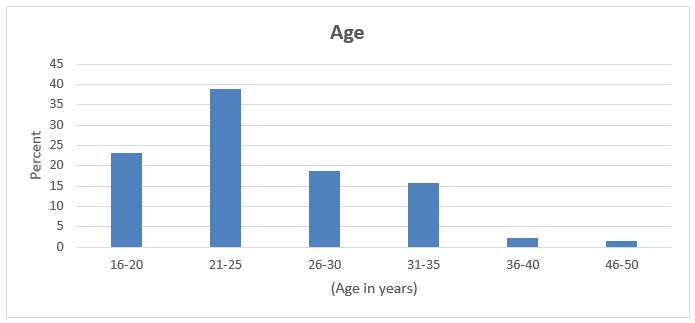

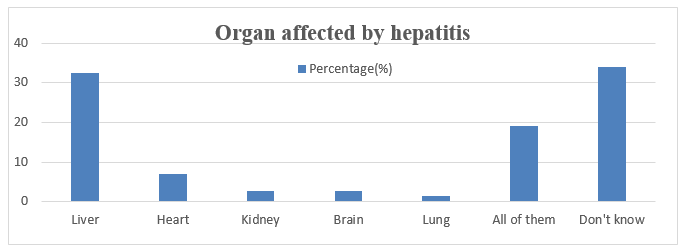
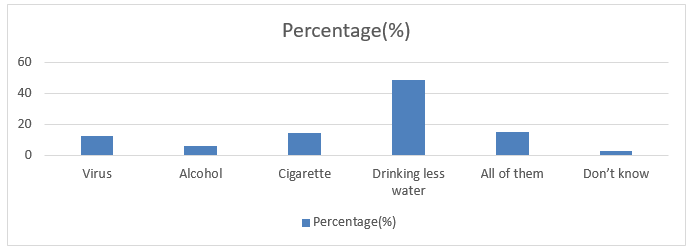
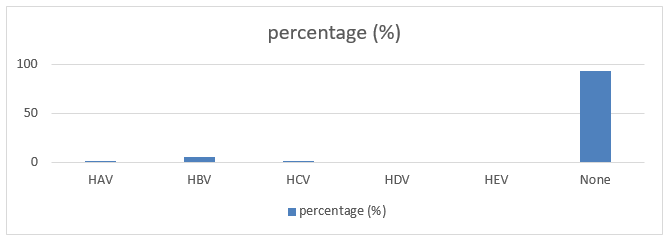
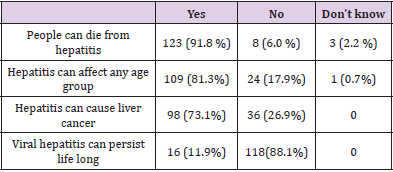
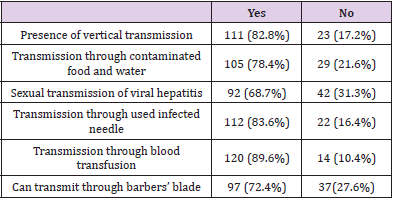
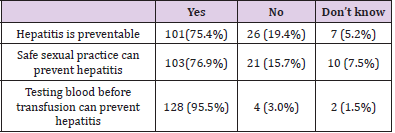
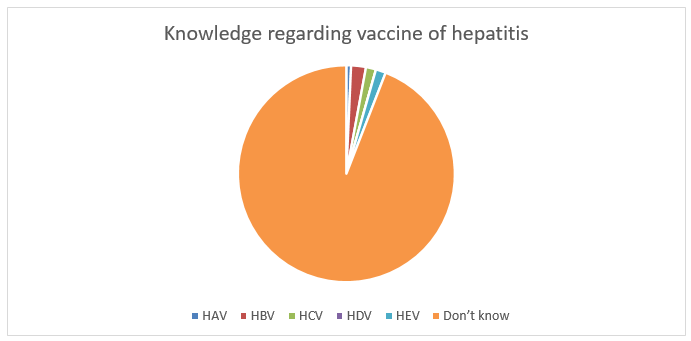
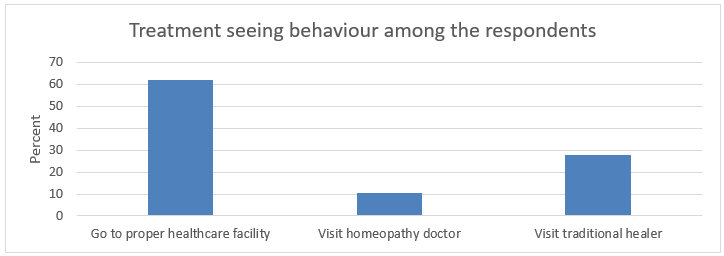
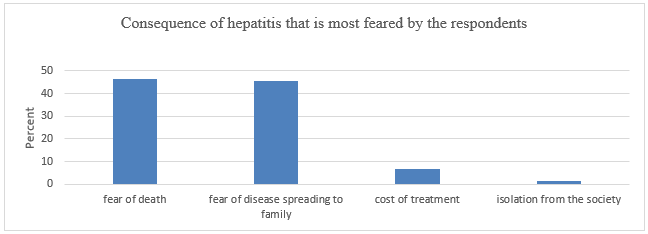



No comments:
Post a Comment
Note: Only a member of this blog may post a comment.